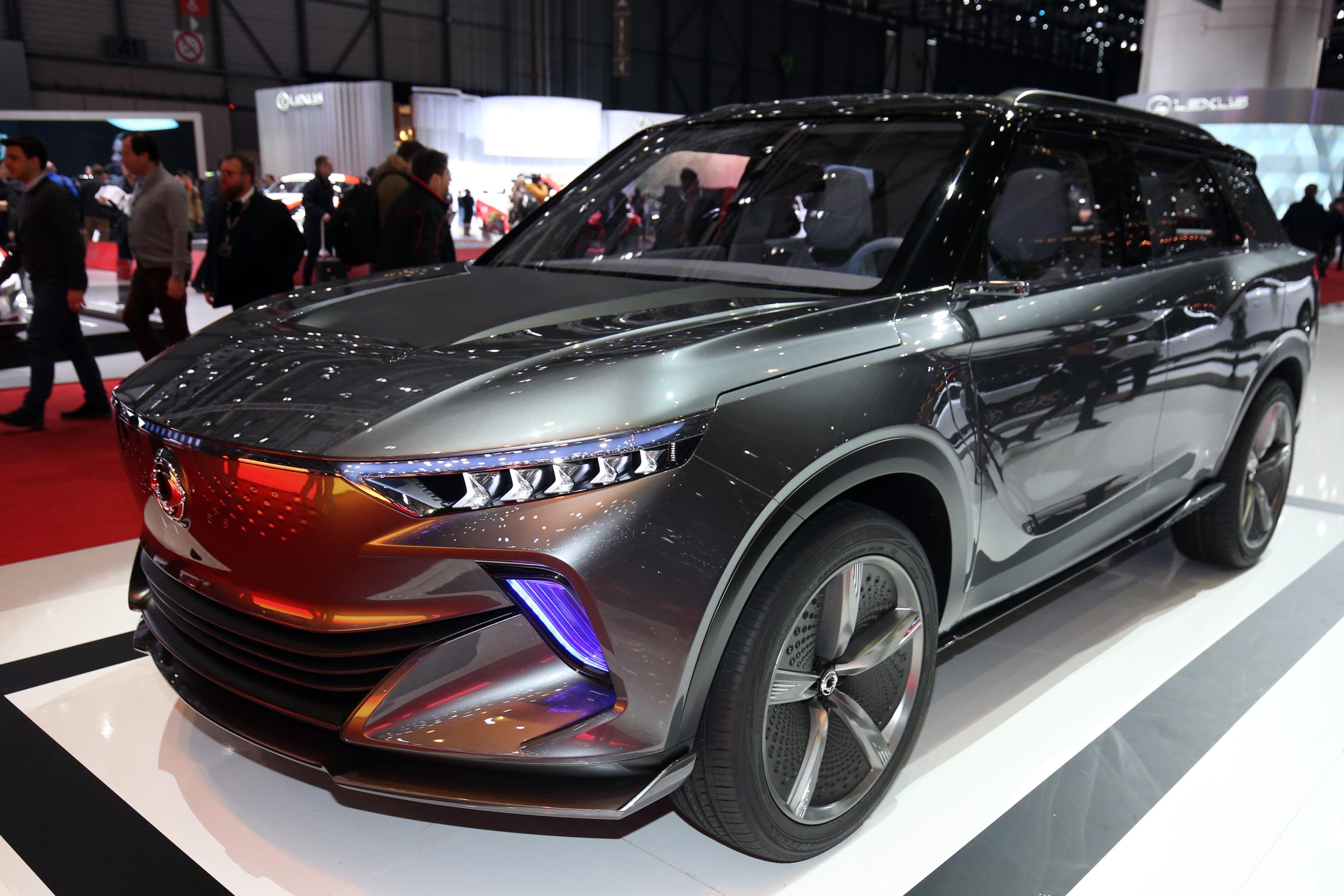
- C-segment electric SUV concept unveiled
- New model points to SsangYong’s future direction for mobility, new technologies and product development
- Design concept – ‘New horizon, smart dynamism’
SsangYong has unveiled its e-SIV concept car at the Geneva motor show, a strategic model showcasing the brand’s future approach to electric vehicles, connectivity and autonomous driving.
As a specialist manufacturer of SUVs, SsangYong has developed a wide range of cars for use on-road, off-road and in both urban and leisure environments. e-SIV is a C-segment sized electric vehicle (EV) and is the company’s fifth electric car concept to be exhibited. Previous models include KEV1 in 2010, KEV2 (2011), e-XIV (2012), and Tivoli EV-R shown at the Geneva Motor Show in 2015, demonstrating the brand’s commitment to EVs.
e-SIV – which stands for Electronic Smart Interface Vehicle, has been developed to demonstrate SsangYong’s approach to creating a connected mobility solution and autonomous driving. The company recognises that change in future mobility will only result from positive consumer interest, engagement and experience, and e-SIV will be central in helping to shape the next-generation of SsangYong SUVs and EVs.
With a compact, balanced and dynamic design to create a sporty looking car for the future, the e-SIV is based on the design of SsangYong’s next generation C-segment SUV.
Styling concept
e-SIV was inspired by SsangYong’s design language that embraces the power and dynamism found in Korea’s natural environment and interpreted in all its recent new car designs. Through the new design concept of ‘New horizon, smart dynamism’, this prototype articulates the future look for SsangYong electric SUVs.
The coupé design blends an attractive body shape with usability and convenience to differentiate it from other EV models, and is intended to position the brand as one that appeals to different future lifestyles.
The concept is intended to show that SsangYong’s next generation of cars won’t just be functional, but will also offer efficiency with dynamic driving characteristics. It will also provide the platform for an advanced connectivity interface along with new user experiences such as autonomous driving.
The design cues communicate the principal values of youthfulness and sportiness, while the subtle design echoes the silhouette of a coupé while retaining the space utilisation and rugged style of an SUV, yet also aerodynamically efficient.
The interior design reflects the changes that SsangYong has embarked on to create a smart, user-centric interface within a balanced and organised space, and is equipped with four independent bucket seats.
The wide and clear information display is designed to make the car user-focused for the driver and passengers, with a really spacious feel. The instrument cluster communicates information and messages via clear graphics suitable for self-driving and fully optimised for future connectivity.
As with the display on the main console, the second-row centre console not only allows information to be shared with rear seat passengers, but is also adjustable to enhance interior space utilisation.
The interior has a bright and contemporary ambiance, with a Geonic pattern used throughout for the soft materials, especially creating a comfortable environment for the driver when driving autonomously. There is also ambient light around the instrument panel and door trims to complete the harmonised atmosphere.
Technology concept
The e-SIV realises the vision of creating a car designed for busy people. The SsangYong aspiration has been to build a car with a smart interface that fuses perfectly with the very latest technology to become a mobile communication space. Through machine learning-based voice recognition, the internet and state-of-the-art autonomous navigation, SsangYong will create a car for people and the future.
Autonomous driving
The autonomous driving technology applied to the e-SIV uses a radar and camera sensor system. This stage 2 self-driving technology recognises the lane the car is travelling in, and can maintain a safe distance between it and other vehicles on the road. This can be further enhanced with an additional sensor to increase the automatic lane and active driving function to achieve self-driving stage 3.
Connectivity
The connected car function applied to the e-SIV consists of three major parts.
Firstly, it can charge the car’s battery remotely by monitoring the charging progress through a smart phone app based on LTE communication with the electric car specialised service.
In addition, it manages the charging station information in real time, predicts the driving range based on the amount of charge in the battery, and selects the optimal driving route accordingly.
Second, the telematics service enables a number of functions to be controlled remotely. These include turning the power on and off, the air-conditioning, car diagnostics and vehicle management, emergency driving in case of an incident and even driver safety support.
The third element is an infotainment service. This creates personalised functionality tailoring services to meet individual convenience via machine learning speech recognition, and works through partnerships to manage music, radio and inter-connected home control.
This new SsangYong connected car service, is intended to improve both safety and convenience.
Technical data
| Model | e-SIV | ||
| Dimensions | Overall length | mm | 4,460 |
| Overall width | mm | 1,870 | |
| Overall height | mm | 1,630 | |
| Wheelbase | mm | 2,675 | |
| Motor | 140kW | ||
| Battery | 61.5kWh | ||
| Charging time (Fast time) | 80% of charging in 50 minutes | ||
| Cruising range | 320 – 450km | ||
| Max speed | 150km/h | ||
| CO2 | g/km | 0 | |
– ends –












